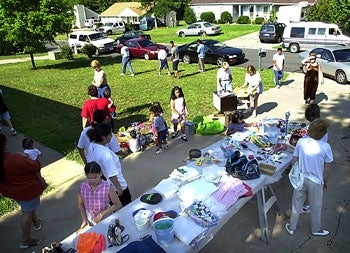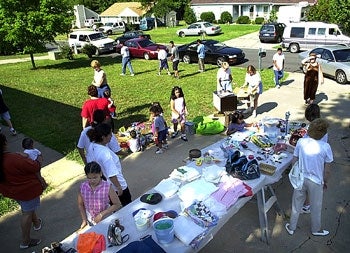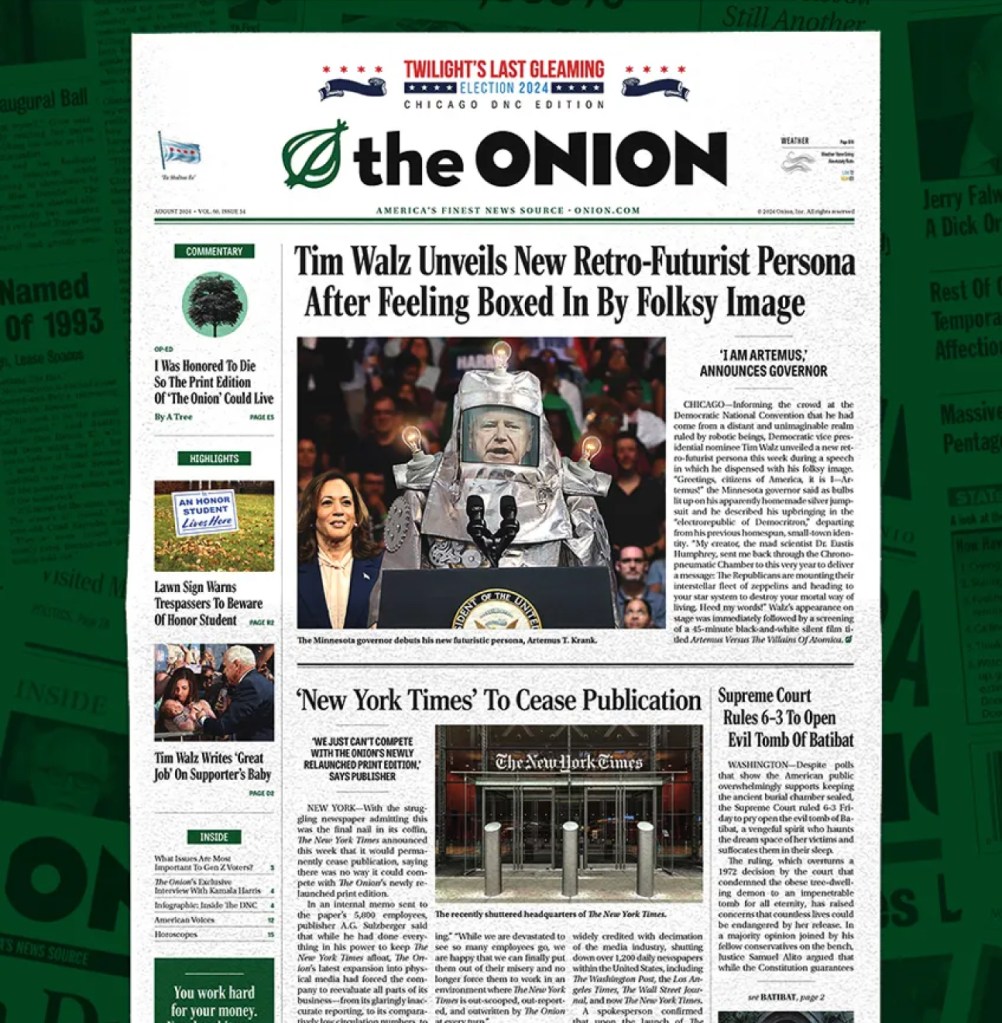LAKE OSWEGO, OR–Despite participants’ hopes of unloading useless, long-shelved items for profit, Oakdale Court’s five-family yard sale last weekend was dominated by the transfer of items from one table to another.

“I had all this junk sitting in the garage, just collecting dust,” yard-sale organizer John Kobler said Monday. “[Wife] Nancy kept asking me to toss it out. You know, my old drill, the kids’ old Sega system, some promotional golf caps I never wear, stuff like that. I was just looking for a way to get rid of it and maybe make some extra cash. Well, I sold most of it to the neighbors and used the money to get some pretty cool stuff in return. Check out this train set.”
The three-day sale, held in the Koblers’ driveway, featured merchandise supplied by the Kobler, Ancona, Farrell, Ashby, and Sarracki families. It is estimated that less than 5 percent of the items sold made their way out of Oakdale Court.
“Our 9-year-old was making a big fuss when we sold his old Pokémon toys to the Sarrackis,” neighbor Debbie Ancona said. “Even though he never plays with them anymore, I felt guilty, so I gave him the 50 cents we got for them to find something that might cheer him up. He ran back from the Ashby table with an old Power Rangers doll.”
While the event resulted in a zero-sum gain for the participating families, they shunned the implementation of a barter system. Instead, transactions within the closed economy were conducted via the use of cash combined with a marginally intelligible system of color-coded stickers and scrawled notes in spiral-bound notebooks.
“I didn’t want to drive all the way to the Salvation Army to get rid of our old baby clothes,” Ancona said. “If I didn’t sell them today, I was going to throw them out. It’s a good thing the Farrells just had a baby. They bought all my baby clothes, and we bought a bunch of the stuff they had to get rid of to baby-proof the house.”
Even items that were determined to have no cash value changed hands through the “free box.” Although no record was kept of the free items’ movements, everything from a stained Parcheesi game board to a broken toaster to a 1986 issue of Good Housekeeping profiling new mother Christie Brinkley managed to find new homes.
“We didn’t make a lot of money,” Kevin Sarracki said. “In fact, we wound up about $2 below where we started. But look at this electronic talking fish I got from the Farrells. It sings ’Don’t Worry, Be Happy.’ Can you believe they were just giving it away for four bucks? That’s going to look great on the wall when I finish the basement rec room.”
Further contributing to the inter-familial circulation of junk was the reselling of items sold at previous Oakdale Court yard sales.
“A few years back, we did a yard sale, and I remember selling a ceramic mixing bowl,” Gretchen Farrell said. “It had a small chip in it, and I thought we didn’t need it anymore, but before long, I started to miss it. Luckily, I found one just like it at the Anconas’, and I got it for a song. It even had a chip in the exact same place. Amazing.”
At the end of the day, the Koblers were the big winners at $3 ahead, while the Ashbys wound up $6.75 in the red.
According to University of Oregon economics professor Dr. Arthur Clybourne, such incestuous yard sales are commonplace.
“The Oakdale Court yard sale is a microcosm of an economic model played out every weekend in cul de sacs across the nation,” Clybourne said. “It is a closed system in which the mere presence of goods creates demand for said goods. The supplier becomes the consumer, and capitalism breaks down and devolves into its embryonic state of pseudo-bartering. Any item, by virtue of its existence within the closed system, becomes something with an intrinsic value and built-in level of demand. How else could you explain somebody paying $1.50 for a scratched vinyl copy of Men At Work’s Cargo?”








